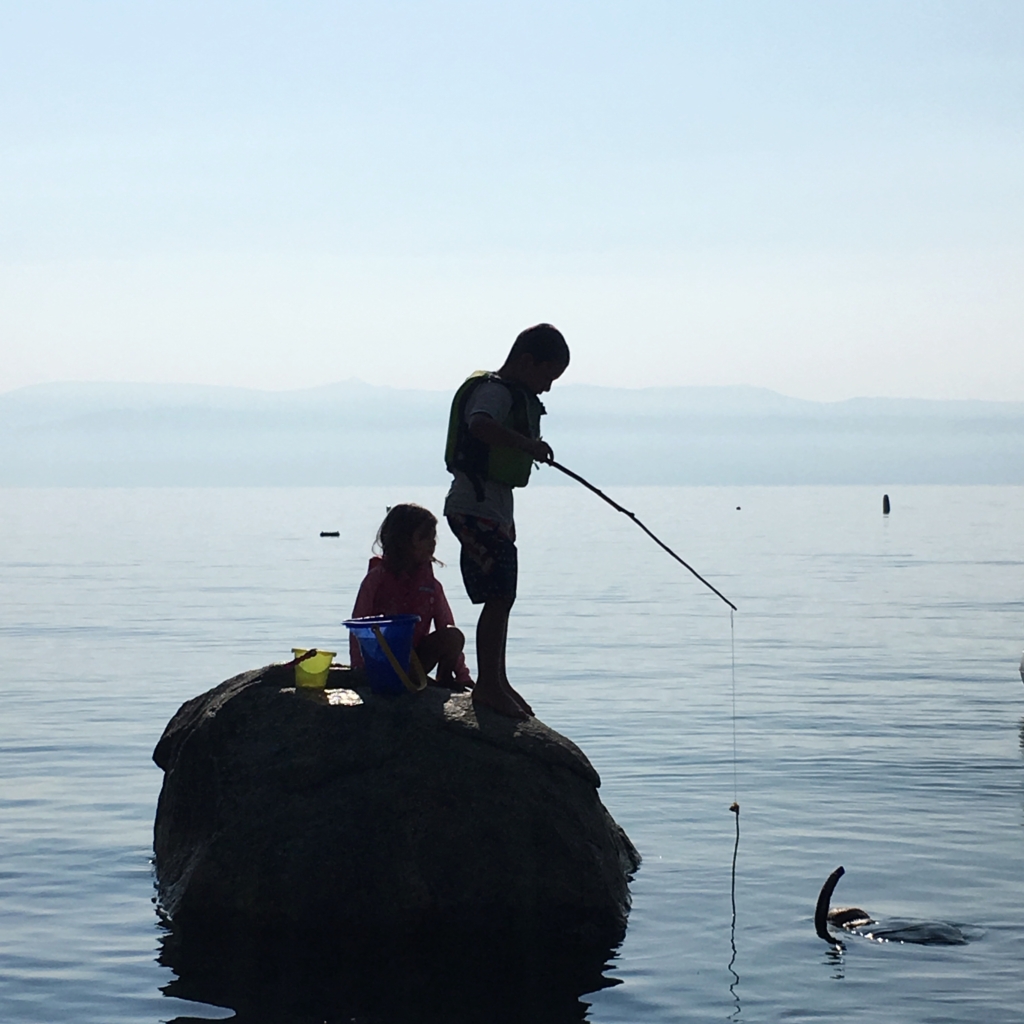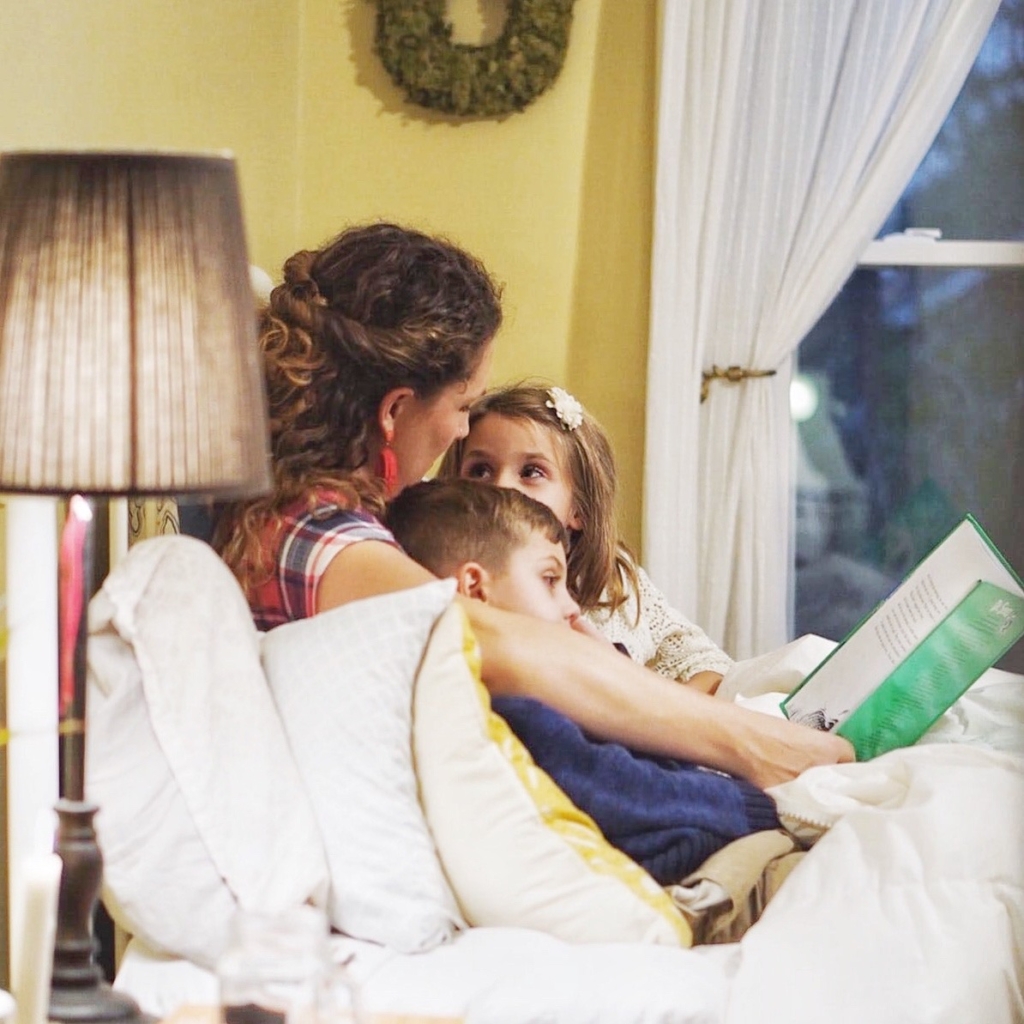Raising bilingual children is challenging, but how far are you willing to go in order to get a child to speak in the minority language?
Today’s guest post is by Ana Calabrese, founder of Spanish Plus Me!
“Whatever works” might be the defining statement when one is trying to raise a bilingual child against the odds. Whether you are using One Person One Language (OPOL) or Minority Language at Home, (MLAH)or any other method to help your child become bilingual, encouraging them to use the minority language will probably become the number one challenge you will face during this journey.
You might have it all under control for a few years. Then, at some point, they start school, find new friends, and are exposed to all the wonders of the world outside home, and your “completely bilingual” toddler might start speaking back to you in the majority language or refuse to use the target language.
This is normal and part of the process, but the way we approach it could be the difference in the outcome, not only in terms of bilingualism and the way a child connects with the target language, but in terms of communication and social skills that start developing during the first years of life, and more importantly, in all things related with the connection to us his/her parents.

When my first child was born things were easy. I was speaking to him in Spanish, and my husband and his family in English. As he was growing, he seemed to understand and respond to both very well.
However, as he began to talk more and attending preschool, I realized that he preferred English over Spanish, and things started to get more complicated for me as the parent in charge of teaching him the minority language.
I remember that I read somewhere about the “trick” of pretending not to understand as a method to encourage a child to respond in the minority language. I also remember that something did not convince me about this approach. I started reading more about other techniques and took a different path more aligned with our parenting beliefs, and one that has worked for us so far.
However, after 8 years on this journey, and having become more involved advocating for bilingualism through my music, I have learned that there are still questions about what methods to use to encourage children to respond in the minority language. The “trick” of pretending not to understand is a really common practice, but also questionable. So, I decided to research it further.
They say it works
Pretending not to understand your child or ignoring them until they use the “correct language,” seems to be one of the most common practices to try to encourage, or force- in some cases- a child to use the minority language.
“I have heard many positive stories from parents about this approach which means it can work for some families. However, it tends to work best with younger children who don’t speak either of their languages fluently,” says Chontelle Bonfiglio, founder of the website Bilingual Kidspot.
From parents’ comments on social media, to influencers’ opinions or columns on leading national newspapers and podcasts, parents have shared their positive results at making their children speak the minority language as a result of the use of this “trick.”
“They eventually get it,” say some. “S/he might resist at first but after a while they will figure it out,” “They don’t traumatize, they will thank you later,” “That is how my parents did it and I am bilingual” are some of the comments widely spread.
And while some parents support the outcome effect of using it, experts and seasoned bloggers on bilingual parenting might have a different opinion.
The real message behind this practice
The following information does not intend to criticize or disqualify the efforts of those that have already used this technique, but to offer more information and perhaps a different perspective to those that are interested in looking deeper into it before using it, especially with younger kids.
From the very basics on relationships, pretending not to understand your child interrupts the communication between both of you. Thus, when we deny a respond to a child’s need if the target language is not used, parents are not addressing the immediate need of a child. That child that looks to her or his parents for security might feel ignored and confused.
“A toddler does not necessarily understand the system of being bilingual. Mom/dad does not listen to me, is one of the messages that a toddler is receiving when parents pretend not to understand,” says Claudia Soruco, Child Psychologist, Master on Early Childhood Bilingual Education, and blogger about bilingualism. “Between ages 1 and 3 the priority is to establish solid relationships. Children need to feel that they are valued, that they are listened to. They need to feel that what they have to say is important regardless of the language used. This is basic for their emotional development,” adds Soruco.
“This would not be my preferred way, as I would not like to give the child the feeling of not being understood or listened to, or even worse, for the child to decide to stay quiet instead of expressing his or her thoughts or asking a question” explains in one of her articles Rita Rosenback, founder of the Multilingual Parenting Website and author of the book: Bringing Up a Bilingual Child.
Adam Beck, founder of the blog Bilingual Monkeys and author of the books Maximize Your Child’s Bilingual Ability and I WANT TO BE BILINGUAL!, adds: “I understand the concerns regarding this tactic, particularly when the child is still very small. For a child who’s a bit older, though, and capable of communicating in the minority language, it’s possible to do this playfully, not reproachfully. And when the approach involves humor and fun, this can help re-engage the child in the target language.”
As every child is different, the child’s response to the “trick” of pretending not to understand might vary from family to family. While some parents might have success in the end, it won´t be surprising that the frustration of not feeling understood might lead to an increase of tantrums or rejection of the target language.
So, if you are using this approach and identifying a negative reaction from your child, it could be a good idea to explore other alternatives.
“While the ultimate goal may be to raise a child who is bilingual, parents need to weigh in if it is worth risking the relationship and their bond with their child, when there are other strategies that can work just as well,” adds Bonfiglio.
According to parenting topic expert and author Maritere R. Bellas “For families raising bilingual, finding the right method can result in many benefits and advantages for their children, as well as the success of the family’s bilingual goals.”

6 Tips for a Different Approach
Regardless of which of the following alternatives you want to use, always keep in mind that the priority here is to address your child’s needs and that S/he understands that you are listening to them.
Be compassionate and remember that by raising a bilingual child you are also raising a person with a skill that hopefully will help him or her to be better able to understand the needs of others, to be flexible, to adapt to changes…at the end of the day this it’s all about leading by example.
Here are some options for you to explore at home and find what works best for your family:
1. Repeat the question using the minority language
This is not about translating the questions your child has asked. It is about responding back in a tone that aims to confirm what has been asked by your child. Or to confirm that you have understood. Ex: “You want milk, right?” “You want ice cream now?” You can use this approach especially when your child asks a question mixing both languages, in that way you will be providing the vocabulary by example not by making them feel corrected.
2. Discuss and rephrase
Similar to the previous option, Rita Rosenback recommends to engage the child in a discussion about the topic at hand. Use different ways of expressing the same thing your child just said to you in the majority language. Ask questions, incorporating the words that your child needs to be able to say the phrase in the minority language. Depending on your child’s age, you can also ask if there was a specific word they did not know.
3. Stick to the minority language
Let your child know that you understand and address her or his needs but continue all communication in the minority language, regardless of which language s/he uses.
4. Translate
If you identify that your child does not know a word, offer the translation but don’t translate everything. If possible, try to describe the meaning of the word using the minority language.
5. Ask to use the minority language
Let your child know that you understand but that you would like to communicate in the minority language. Ex: “I hear you, but let’s use ______.” “Of course, could you say that in _____.” “How do we say that in _______.” “How would you say that in ________.” Be sure this doesn’t become a condition prior to addressing your child’s needs. Otherwise, you would be conditioning the communication and would be very close or worse to pretending not to understand your child. Ex: “Yes, but if you say it in______ first.” “Yes, but if you ask in ______.” “Not until you say it in _____.” “Say it in _____.”
This technique will work better if you first ensure that your child has the tools (words) to switch to the minority language. If a child does not know the words, pushing him in any way to use the target language could only lead to frustration.
6. Differentiate the languages
When your child uses the majority language reassure him and then explain which is the language was used and which one you would like them to use. Ex: “That is great English, I would love to hear how you can say it in Spanish”. In this way your child doesn’t feel there is something wrong with the language s/he is using, or that is using it incorrectly, but that s/he is actually able to also use a different language to say the same.
This approach is also helpful for OPOL families that want to avoid the use of “dad say it like this” “mom say it like that”. In this way if by any chance your child might be getting the message of using the “wrong” language, and developing some sort of negative feeling towards that language by that perception, then at least this is not connected with one of you.
Finally, the only way to help your child use the minority language and feel confident enough while using it, is by offering as much exposure as possible to the target language in the form of music, books, TV shows and movies, apps, games and most importantly, with lots of conversations, playing, and singing together. “Children are not sponges and they do not pick up a language as if by magic. There needs to be enough interactive exposure to a language for a child to learn it,” explains Rita Rosenback.
Have in mind that producing language is like cooking, you need ingredients, and the ingredients for language are words, and it is our job as a parents raising bilingual kids to provide as much exposure to those words to empower our kids to use the target language. In the end, in words of Maritere Bellas: “Raising a bilingual child is a commitment that requires time and determination, a leap of faith, consistency yet flexibility.”
Ana Calabrese is a native Spanish speaker from Colombia raising 2 bilingual-bicultural kids in California. She founded Spanish Plus Me and recorded her album: Short + Fun Spanish Beats to promote the advantages of bilingualism, and encourage the introduction of the Spanish language to children through the use of songs, movement and fun. You can find Ana’s songs on Amazon, iTunes, Spotify, and Google Play, and download lyrics and printables at www.spanishplusme.com Find her on Instagram @anacalabrese_spm
Related articles: Raising a bilingual child: alternatives to pretending not to understand
Click over the names to learn more about the experts mentioned on this article and additional resources for raising bilingual parents:
Rita Rosenback, Multilingual Parenting
Chontelle Bonfiglio, Bilingual Kidspot
Claudia Soruco, Life in a Second Language
Adam Beck, Bilingual Monkeys
Maritere Bellas https://maritererodriguezbellas.com/


